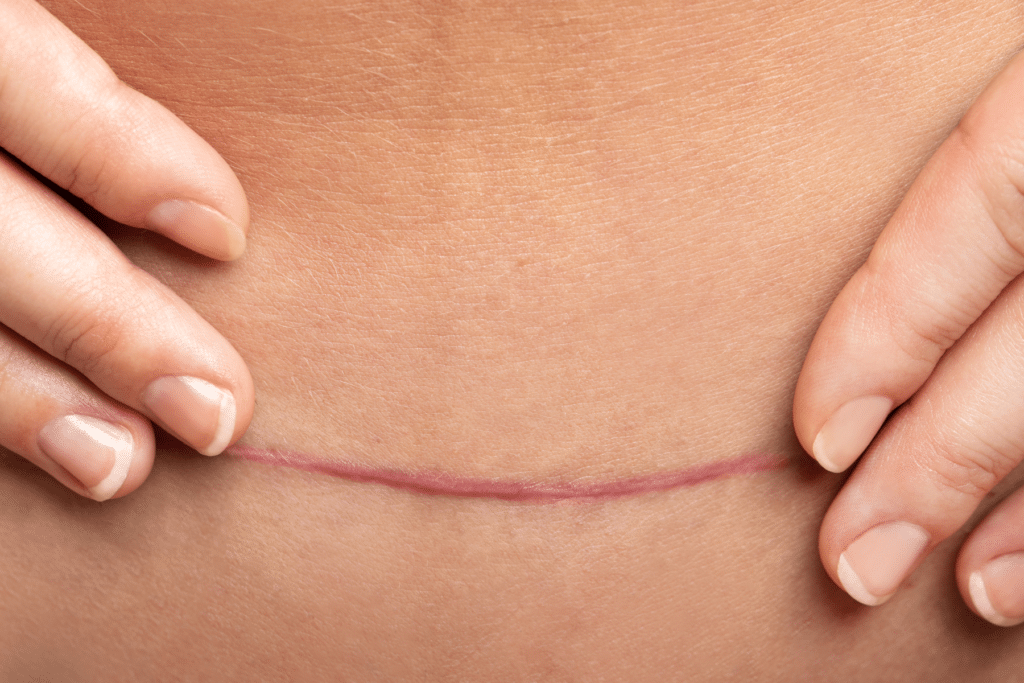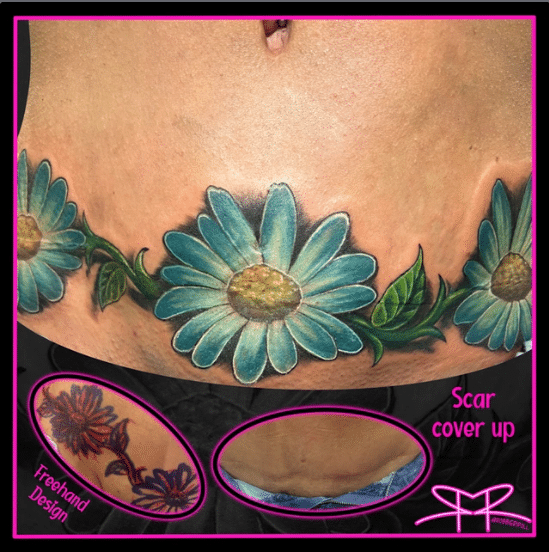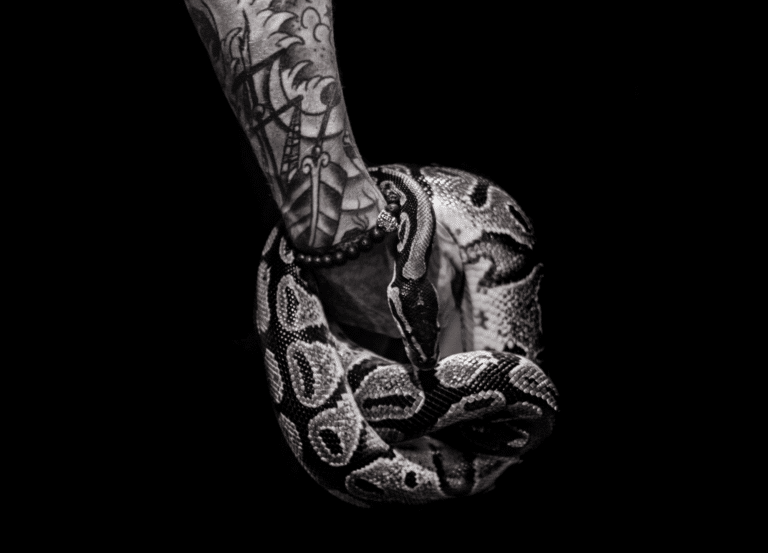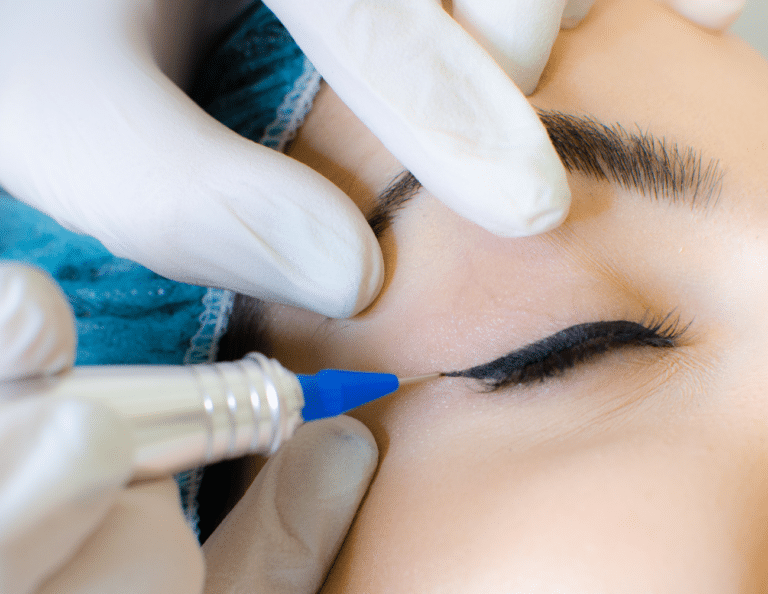Imagine turning your scars into beautiful art. Scar camouflage tattoos are doing just that, giving people a new way to cover up their scars. This blog will help you understand everything about scar camouflage tattoos, so whether you’re a beauty enthusiast, a tattoo artist, or a dermatologist, you’ll find valuable insights.
Introduction
Scars tell stories, but sometimes those stories are best kept personal. Scar camouflage tattoos offer a way to blend scars seamlessly with your natural skin tone, making them less noticeable. This blog will take you through the fascinating world of scar camouflage tattoos, from what they are to who can benefit from them. You’ll also learn about the benefits, risks, and real-life success stories that make this option increasingly popular.
Understanding Scar Camouflage Tattoos
What are Scar Camouflage Tattoos?
Scar camouflage tattoos are a specialized form of micropigmentation designed to match the color of your scar with the surrounding skin. These tattoos are different from regular tattoos because they use pigments that closely resemble natural skin tones. The goal is not to draw attention but to make the scar blend in as naturally as possible.
The process involves carefully implanting these pigments into the upper layers of the skin. Unlike traditional tattoos, scar camouflage requires meticulous attention to detail, as the objective is subtlety. For this reason, it’s essential to consult a trained professional who specializes in this type of tattoo.
Types of Scars They Can Cover
Scar camouflage tattoos can cover a variety of scars. These include surgical scars, burn scars, stretch marks, and acne scars. Each type of scar presents its unique challenges and requires specific techniques for effective camouflage. Surgical scars, often linear and raised, need a different approach compared to the uneven texture of burn scars.
Stretch marks, which are essentially a form of scar, can also be effectively camouflaged. The key is to match the pigment to the skin’s natural tone, taking into account the varying shades that may exist within the stretch mark itself. Acne scars, usually smaller and more numerous, require precise application to achieve a uniform look.
The Process of Getting a Scar Camouflage Tattoo
The process starts with a consultation, where the tattoo artist assesses the scar and discusses the desired outcome with the client. This initial step is crucial for setting realistic expectations and creating a customized plan tailored to the individual’s needs.
Next, a patch test is usually conducted to ensure that the pigments do not cause any allergic reactions. Once the test is successful, the tattooing process begins. The procedure can take a few hours depending on the size and complexity of the scar. Aftercare is critical to ensure the best results, involving keeping the area clean and moisturized while avoiding direct sunlight and strenuous activities.
Benefits and Risks
Advantages of Scar Camouflage Tattoos
One of the most significant benefits of scar camouflage tattoos is the boost in self-esteem and confidence they can provide. For many, scars are a constant reminder of past traumas or surgeries. Camouflaging these scars can offer emotional relief and a renewed sense of normalcy.
Another advantage is the long-lasting nature of these tattoos. While touch-ups may be required, the results are generally durable, offering a semi-permanent solution to visible scars. Additionally, scar camouflage tattoos can be customized to match any skin tone, making them a versatile option for people of all ethnicities and skin types.
Potential Risks to Be Aware Of
Like any cosmetic procedure, scar camouflage tattoos come with potential risks. One of the most common concerns is the possibility of an allergic reaction to the pigments used. This is why a patch test is crucial before proceeding with the full tattoo.
There’s also the risk of infection if proper aftercare instructions are not followed. The skin needs time to heal, and neglecting aftercare can lead to complications. Additionally, there’s always the possibility that the results may not meet expectations, either due to the complexity of the scar or the skill level of the tattoo artist.
Who Can Benefit
Individuals with Various Types of Scars
Anyone with visible scars that affect their confidence can benefit from scar camouflage tattoos. This includes individuals recovering from surgeries, accidents, burns, or even those who have stretch marks from pregnancy or weight changes. The procedure offers a way to make these scars less noticeable, allowing individuals to feel more comfortable in their skin.
The Role of Beauty Enthusiasts, Tattoo Artists, and Dermatologists
Beauty enthusiasts can stay ahead of the trend by learning about scar camouflage tattoos and potentially recommending them to friends or clients. Tattoo artists can expand their skill set by specializing in this niche, offering a valuable service that goes beyond traditional tattooing. Dermatologists can collaborate with tattoo artists to provide a holistic approach to scar treatment, combining medical expertise with artistic skill.
Final Thoughts
Scar camouflage tattoos offer a revolutionary way to blend scars with natural skin tones, providing both aesthetic and emotional benefits. From understanding the process to knowing who can benefit, this guide has covered all the essentials. If you or someone you know could benefit from this innovative procedure, don’t hesitate to explore this option further.
For those looking to enhance their skills or seek professional advice, consider booking a consultation with a specialist. Transform your scars into stories of strength and beauty with scar camouflage tattoos.
Frequently Asked Questions (FAQs)
What is scar camouflage?
Scar camouflage is a specialized tattoo technique that aims to blend scar tissue with the surrounding healthy skin and normal skin. By using carefully selected tattoo pigments, the procedure can make scars less noticeable and help achieve the desired appearance.
How does the healing process work after getting a scar camouflage tattoo?
The healing process after a scar camouflage tattoo is similar to that of a regular tattoo. The treated area will initially appear darker but will lighten as it heals. Following proper aftercare instructions is crucial to ensure smooth and effective healing.
What kind of training is required for scar camouflage tattoo artists?
Artists need specialized scar camouflage tattoo training, which covers techniques to match pigments to human skin, manage skin conditions, and understand the unique aspects of tattooing over scar tissue. This training ensures they can deliver safe and aesthetically pleasing results.
How are tattoo pigments selected for a camouflage tattoo?
Tattoo pigments are carefully chosen to match the surrounding skin as closely as possible. The goal is to create a seamless blend that makes the scar less noticeable. The specific shade and type of pigment used will vary depending on the individual’s skin tone.
Is the procedure for scar camouflage different from a regular tattoo?
Yes, the procedure for a camouflage tattoo is different from a regular tattoo. The technique involves more precise application of pigment to ensure it blends well with the surrounding skin. Additionally, the depth and type of needle used may vary depending on the scar’s characteristics.
How many sessions are needed to achieve the desired result?
The number of sessions required can vary depending on the size, type, and location of the scar. While some may achieve their desired appearance in a single session, others might need multiple sessions and subsequent touch-ups.
What should I expect during and after the procedure?
During the procedure, the tattoo artist will use a needle to apply pigments to the scar tissue. Some mild discomfort or pain may occur, similar to a regular tattoo. After the procedure, it’s important to follow aftercare instructions to protect the tattoo and promote healing.
How does scar camouflage help in boosting confidence?
By blending scars with healthy skin, scar camouflage tattoos can significantly improve one’s self-esteem. Making scars less noticeable can help individuals feel more comfortable and confident in their skin.
Can the pigmentation fade over time?
Yes, like all tattoos, the pigmentation of a scar camouflage tattoo can fade over time. Sun exposure, skin type, and general wear can affect the longevity of the tattoo, making occasional touch-ups necessary.
Is there a risk of the tattoo pigment reacting with scar tissue?
There’s a possibility of an allergic reaction to the tattoo pigments, especially if the skin is sensitive or already damaged. This is why performing a patch test before the full procedure is important.
How long does it take to see the final results?
While initial results can be seen immediately after the procedure, the final appearance will be visible once the tattoo has fully healed. This can take several weeks to a few months, depending on individual healing rates.
How long does a scar camouflage tattoo last?
Typically, these tattoos can last several years, but touch-ups may be needed over time to maintain the appearance.
Is the procedure painful?
The level of discomfort varies from person to person, but most report experiencing mild to moderate pain, similar to getting a traditional tattoo.
How much does it cost?
The cost can vary widely depending on the size and complexity of the scar, as well as the expertise of the tattoo artist. On average, prices can range from $200 to $1,000.









